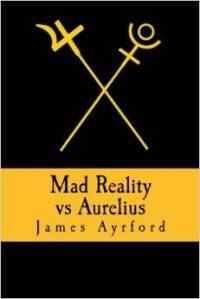Experimental philosophical short story as deep and insightful as Thus Spoke Zarathustra. How the eyes of the abyss look like, when she stares back at you? Does she, like a woman, enjoys attention and whip or not? Or why even staring into it, what can be seen there and is it even worth it? So here is what I’ve seen in there. Like Nietzsche’s Zarathustra, protagonist fictitious travels and endeavours serve as a metaphoric vehicle to present and illustrate philosophical ideas such as subjectivity of reality that people experience in their daily life, influence of religion on the world and its anatomy, psychology of the masses and of love, possibility and requisites of happiness. It consists of two narratives: one follows endeavours of main protagonist Aurelius and the other describes major historical events of the world of Mad Reality. Most characters and events in actuality are an allegoric representations of the real world concepts and ideas, for example Maximus embodies Ancient Rome, its values and metaphysics. The story is set in a magic and odd technology infused, somewhat bizarre and even gruesome, metaphoric world. It starts with Aurelius reflecting over the disappearance of a mysterious women named THD as well as over everything his life had been about so far. As the story progresses, not only details of their love affair and other events revealed, but also both surface and hidden reasons behind various events of his life and even those of a broader world that caused it all to turn out this way. Conversation with THD led Aurelius to eventually discover a psychological working of love that led to a metaphysical conclusion of her real nature, and other events and stories have their own philosophical, existential, metaphysical or psychological wisdom to tell. Among them causes of conflict between Aurelius and priests of the Model over the existence of a certain dios as well as reasons for it unusual outcomes. As well as war between dioses Redemptius and Bicornerius and their followers that, while settles, leads only to further beaconing conflict with even more contestants. Origin of dioses and reasons for their popularity among the people and importance in the grand scheme of things. And even motives behind hitting a ground with a forehead according to a prescribed method shared by fellow ground-hitters and why it is not only a very popular activity but also a sacred ritual of great sanity. And many other witticisms. Author of this masterpiece is a mysterious, solitary philosopher with a Bachelor degree in an unrelated field, who nevertheless has sound understanding of literature of merit due to independent studies and, in addition to works of Nietzsche, read such famous literary works as One Hundred Years of Solitude by Gabriel Garcia Marquez and Slaughterhouse five by Kurt Vonnegut.
Review: Wow, James Ayrford writes in an insightful, thought-provoking manner. Mad Reality vs Aurelius is a brilliantly written piece which deserved 5/5 Stars.

No comments:
Post a Comment